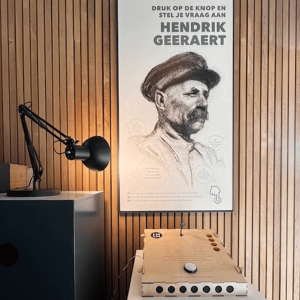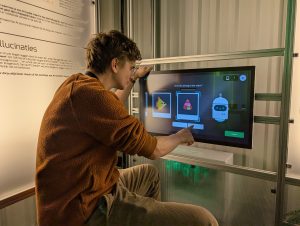Best Deep Learning Architectures for Image, Text, and Audio Data
Welcome, tech enthusiasts! Are you ready to dive deep into the world of deep learning? Today, we’re breaking down the best architectures for processing three types of data: images, text, and audio. From convolutional neural networks to recurrent neural networks, we’ve got the scoop on the latest and greatest in deep learning. Let’s get started!
The Power of Deep Learning
Deep learning is a branch of artificial intelligence that has revolutionized the way machines learn from data. It has proven to be incredibly effective at solving complex problems in a wide range of domains, from image recognition and natural language processing to speech recognition and autonomous driving. In this article, we’ll take a closer look at some of the best deep learning architectures for processing different types of data.

Image Recognition
Image recognition is one of the most well-known applications of deep learning, and for good reason. With the rise of computer vision, deep learning has been used to tackle some of the most challenging problems in the field. Convolutional neural networks (CNNs) have been the architecture of choice for image recognition tasks, with models like VGGNet, ResNet, and Inception achieving state-of-the-art performance on benchmark datasets like ImageNet.

This article was created entirely by artificial intelligence.
Natural Language Processing
Text data presents a different set of challenges than image data, but deep learning has proven to be just as effective at processing it. Recurrent neural networks (RNNs) are the go-to architecture for sequence-to-sequence tasks, like machine translation and text generation. Long short-term memory (LSTM) networks and gated recurrent units (GRUs) are popular variants of RNNs that can better handle long-term dependencies in text data.
Speech Recognition
Speech recognition is another area where deep learning has made significant strides in recent years. Traditional methods like hidden Markov models (HMMs) have been largely supplanted by deep neural networks, particularly convolutional neural networks and recurrent neural networks. Models like Wav2Vec and DeepSpeech have achieved state-of-the-art performance on benchmark datasets like the Wall Street Journal and LibriSpeech.
Audio Processing
Audio processing is a broad field that encompasses everything from music recommendation to environmental sound recognition. Deep learning has proven to be an effective tool for tackling these problems, with architectures like convolutional neural networks and recurrent neural networks being used for different types of audio data. Researchers have even used deep learning to synthesize realistic speech and music, opening up new possibilities for audio-based applications.

I tried to teach a neural network to tell me a joke…
…but all it came up with was “404: Humor not found.”
Transfer Learning
One of the most powerful techniques in deep learning is transfer learning, where a model pre-trained on a large dataset is fine-tuned on a smaller, related dataset. Transfer learning has been used to achieve state-of-the-art performance on a wide range of tasks, including image recognition, natural language processing, and speech recognition. By leveraging the power of pre-training, transfer learning can significantly reduce the amount of data and computation required to train an effective deep learning model.

This article was created entirely by artificial intelligence.
The Future of Deep Learning
As deep learning continues to advance, we can expect to see even more sophisticated architectures and techniques emerge. From generative models that can create realistic images, to reinforcement learning algorithms that can learn to play complex games, the possibilities are endless. With deep learning, we’re only scratching the surface of what’s possible, and we can’t wait to see where it takes us next.

Conclusion
We hope you had as much fun as we did exploring the best architectures for image, text, and audio data in the world of deep learning. From convolutional neural networks for image recognition, to long short-term memory networks for natural language processing, to deep belief networks for audio analysis, the possibilities are endless.
Don’t forget to keep an eye out for the next big breakthrough in deep learning – who knows what kind of amazing applications are just waiting to be discovered! Thanks for joining us on this journey, and until next time, keep on learning.





